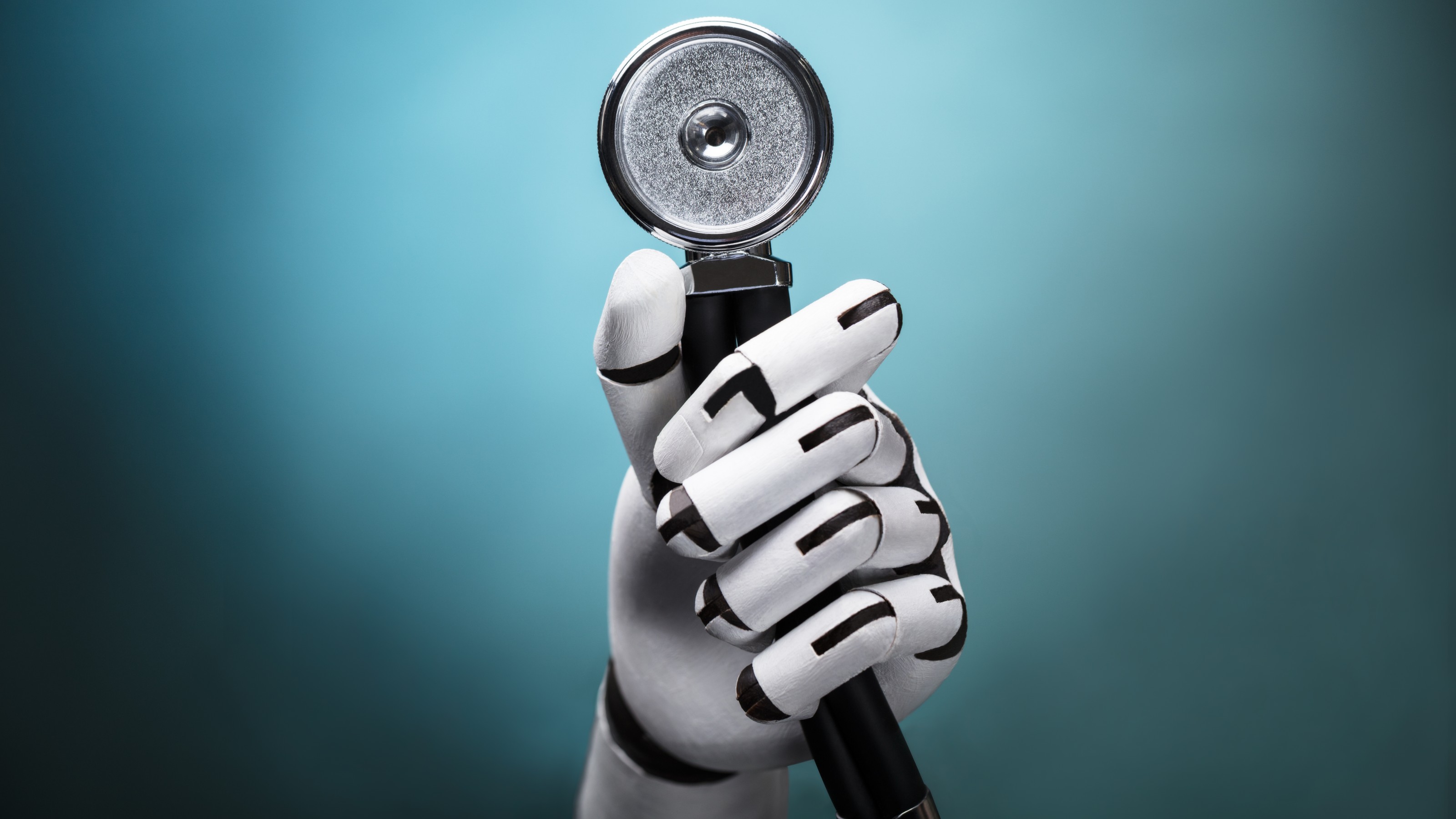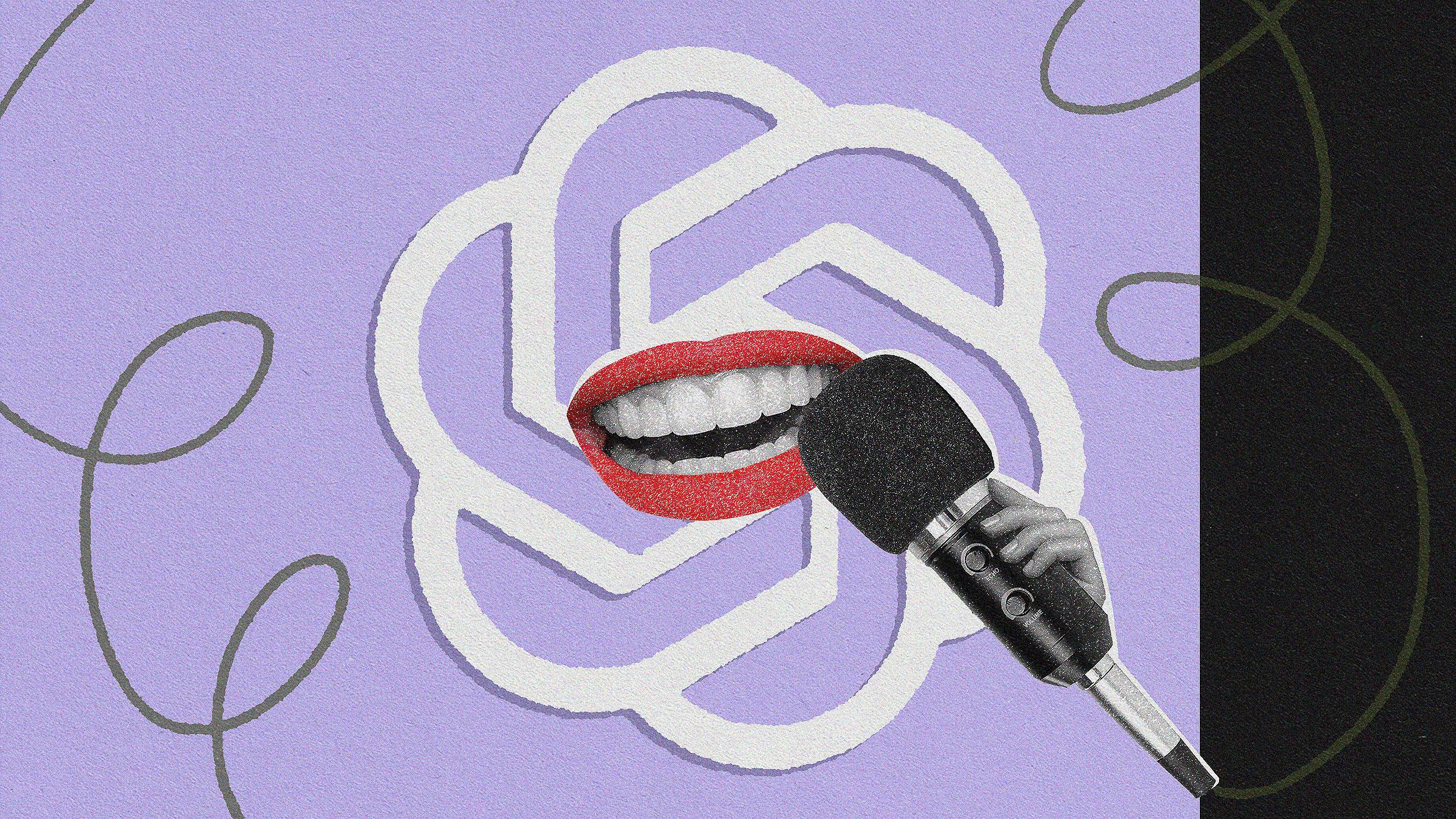Art critic Jerry Saltz: A “Francis Bacon of AI art” will emerge, but today’s work falls flat

- Big Think recently spoke with Jerry Saltz, senior art critic at New York Magazine and winner of the 2018 Pulitzer Prize for Criticism, about the current state of AI art and where the medium might be heading.
- Saltz draws a parallel between AI art and the paintings of Norman Rockwell, suggesting both tell “you exactly what to think and feel.”
- However, some AI artists maintain that many of the genre’s critics are missing the point and regurgitating familiar critiques of past art movements that ultimately gained renown and mainstream acceptance.
Art produced by or with the help of artificial intelligence is more popular than ever, from the record-breaking $432,000 auction of Obvious collective’s Portrait of Edmond Belamy to the overwhelming success of Refik Anadol’s “Unsupervised” exhibit at the MoMA. But one art-world figure decidedly not on board is Jerry Saltz, the seasoned resident art critic of Vulture magazine. Saltz has made no secret of his distaste for AI art, the artists who make it, and the people who flock in line to see or, God forbid, buy it. His scathing reviews have upset many in the tech world, and, in the case of Anadol’s “Unsupervised,” sparked heated back-and-forths on X.
“This kind of work, if it were the scale of a regular painting, would be ridiculous,” Saltz tells Big Think. “You’d just laugh at it. It does not have scale so much as it’s big and takes up room. It keeps crowds interested for whole minutes at a time. It gets crowds in.”
The 73-year-old critic is well aware of his unpopularity on this front. “They think that it’s art,” he says. “I’m in the minority. I grant that my opinion is 1% of 1% of all opinions and that 99% of the audience loves this kind of art […] I say to the artists: Good for you. You won.”
Still, Saltz stands by his critiques, which — self-deprecation aside — may be enlightening if you’re similarly perplexed by the overcrowded space that is AI art, and wondering how to distinguish between the good, the bad, and the ugly.
An artificial dream
Setting aside specific AI art, artists, and algorithms, Saltz takes issue with the now almost ubiquitous term itself.
“I think it’s a fake category that people use to make a handsome product that wows crowds with super obvious, no-brainer ideas, almost always accompanied by romantic, dramatic music and whizbang, gee-whiz scale.”
He compares AI art with Norman Rockwell’s, an American painter and illustrator who was commercially successful but critically derided.
“A lot of AI art works in the same way a Rockwell works: by telling you the exact story, describing its characters to a T, and telling you exactly what to think and feel. Everyone who looks at it has the same thought: Wow, cool.”
Saltz suggests that the tech world’s cultural sway may fuel hype around AI art, particularly through the cults of personality around figures like Sam Altman and Elon Musk. After all, the art world has always been susceptible to hypes and fads. This one may be no different.
“It reminds me of how we see all those Instagram posts and TikTok reels of white people lining up to be escorted to the top of Mount Everest in search of their dream,” Saltz muses. “Except it’s not their dream. It’s a dream that was given to them.”
As a critic who speaks his mind openly, frankly, and at times coarsely, Saltz has been met with plenty of criticism himself. “All artists have strong reactions,” he says, “and God love them for that. They are probably right. I’m a geezer idiot, and younger critics are novice idiots. That’s fine. There’s no problem with that. But in this sector — AI art — I find it to be especially true.”
Saltz entered his most publicized altercation with an artist when he reviewed Anadol’s “Unsupervised” for Vulture. Unable to understand why so many visitors were flocking to the Museum of Modern Art, he referred to the exhibit as “a mind-numbing multi-million dollar spectacle,” “a house of cards and hall of mirrors,” “momentary diverting gimmick art,” and a “half-a-million-dollar screensaver.”
Anadol responded to Saltz’s review on X, writing, “ChatGPT writes better than you” and telling the critic he “needs to research, understand the medium” before writing about it.
Asked about this confrontation, Saltz notes that — while all artists take criticism seriously and at times personally — he has found artists working in the AI space to be particularly combative against those who question the quality of their work. While Saltz says he researches before he criticizes — he created his own NFT before covering the topic for Vulture, for example — it’s worth considering the other side of the story. After all, art criticism often walks a fine line between distinguishing good art from bad art and gatekeeping new movements and ideas on behalf of the status quo.
Familiar critiques
For example, the negative reception of AI art bears similarity to criticisms flung at Cubists, Fauvists, and other groundbreaking artists from the early 20th century — artists who, despite being ridiculed by established critics, went on to achieve widespread success and acclaim once the rest of society caught up to and began to understand and appreciate what these forward-thinking individuals were doing.
“It’s 100% the same pattern,” Anadol said in an interview with Freethink. “Been there, done that. The responses we sometimes get are also similar to the ones that Jackson Pollock and Mark Rothko received. In fact, all the heroes of humanity received similar responses. They opened the curtains, and whenever they did, there was this reaction. Artists are the alarm mechanisms of humanity. We always see things way before.”

In the same interview, Anadol said there’s a clear divide between critics who come to his studio and observe him working and those who glance at the finished products in galleries and museums. Although the second approach is not necessarily wrong — some critics, perhaps Saltz included, would argue it makes for better, unbiased criticism — it obscures the fact that much of AI art, like Cubism or Fauvism, is as much about the creative process as the art that emerges from that process.
“AI research is heavily focused on trying to make AI as accurate as possible in trying to mimic reality,” Anadol says.
“But for artists such as myself, we love to break things. We love to do things that are not normal. We want to see, not reality, but chance, dreams, mistakes, imperfections, hallucinations, to find a new language and vocabulary.”
Refik Anadol
Just as early 20th-century abstract art investigated how people see — how our brains and eyes assemble shape and color into meaningful, emotionally resonant imagery — so does AI art explore the machinations that underlie creative expression: how an artist, human or not, collects, analyzes, and reassembles data to form something original.
New forms
Another central problem of art criticism is that it’s much easier to tell what makes something bad than what makes something good. Criticism of AI art faces another difficulty here: The genre is still young. It hasn’t been around for long enough to predict how it will develop or, more importantly, be remembered in the future.
Still, we can attempt to predict the legacy of modern AI art by looking back on how the art world responded to previous technological breakthroughs, like the camera. Much of the artistic experimentation of the late 19th and early 20th centuries came from painters asking themselves what all their mediums could do that photography could not.
In the same way that realistic renditions of people and nature gave way to more subjective expressions of shape, color, and form — actions a camera cannot perform — the AI art of tomorrow will likely focus more and more on things human artists cannot do, such as transforming vast amounts of raw data into compelling visual narratives, or enabling human artists to tweak early drafts of artwork at speeds none of us could ever reach.
Conversely, art created by humans is likely to emphasize what algorithms cannot do: love, grieve, contemplate our own biological shortcomings, and aspire to succeed even though such aspirations may be irrational.
“I believe that in the future, there will be a Francis Bacon of AI art,” Saltz speculates. “We just haven’t seen that artist yet. They have not yet emerged. Art takes a long time. Painting is still emerging and it’s been with us for 40,000 years. It’s still feeling its parameters. AI is doing that now.”
“Right now, everything these artists make has a precedent,” Saltz says. “They either make a moving, abstract, expressionist painting, or a Jackson Pollock-squiggle thing, or a Walt Disney manga character (boy hormone art). None of it is without precedent. The problem is when some of them say, ‘Look at my new Surrealist work,’ I say: ‘Well, it doesn’t look any different from the old Surrealism.’ Why should I even look at it at all? I’m interested in new forms. Form is the carrier of deep content, not your explanation of what deep content is!”
Reaffirming the importance of art criticism, Saltz sticks to his opening words:
“I never, ever listen to artists. They don’t know what their art is about. I know what their art is about. Let me get it wrong. If they disagree with me, fine. But I’m of another generation and there is no more of me. My kind does not exist anymore.”





